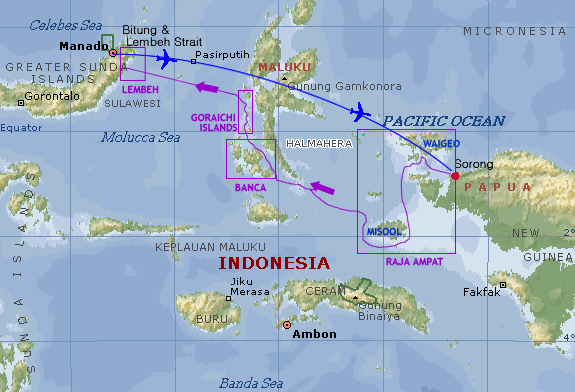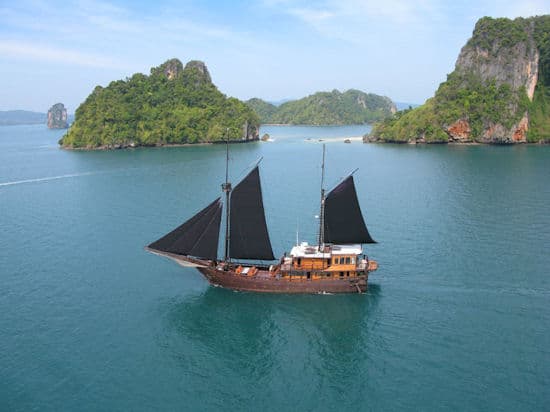Prambanan Temple
Prambanan Temple (Citizen Local say Candi Prambanan) or Roro Jonggrang Temple is a 9th century Hindu temple in Central Java, Indonesia. Dedicated to Trimurti (three Gods In Hindu), The expression of God as a creator (Brahma), The Sustainer (Wisnu) and The Destroyer (Shiva). The temple is located approximately 18 km (11 mil) east of the city of Yogyakarta, on boundary between Central Java and Yogyakarta Province. The Temple, a UNESCO World Heritage Site is the largest Hindu Temple in Indonesia and one of the largest in Southeast Asia .
Prambanan is the largest Hindu temple of ancient Java, and the construction of this royal temple was probably started by Rakai Pikatan as the Hindu Sanjaya Dynasty's answer to the Buddhist Sailendra Dynasty's Borobudur and Sewu temples nearby. Historians suggest that the construction of Prambanan probably was meant to mark the return of the Hindu Sanjaya Dynasty to power in Central Java after almost a century of Buddhist Sailendra Dynasty domination.
The present name Prambanan was derived from the name of Prambanan village where the temple stood, this name probably being the corrupted Javanese pronunciation of Para Brahman (The Supreme Brahmana).
Prambanan Temple
Rediscovery
The Javanese locals in the surrounding villages were aware of the temple's existence already before rediscovery. However, they didn't know about its historical background: which kingdoms ruled or which king commissioned the construction of the monuments. As a result, the locals developed tales and legends trying to explain the origin of temples, infused with myths of giants, a cursed princess, and thus gave Prambanan and Sewu a wondorous origin said to be created by multitude of demons under the order of Bandung Bondowoso, according to Loro Jonggrang Legend.
The temple officially caught the international attention in early 19th century. In 1811 during Britain’s short-lived rule of the Dutch East Indies , Colin Mackenzie, a surveyor in the service of Sir Thomas Stamford Raffles, came upon the temples by chance. Although Sir Thomas subsequently commissioned a full survey of the ruins, they remained neglected for decades, with Dutch residents carting off sculptures as garden ornaments and native villagers using the foundation stones for construction material.
Half-hearted excavations by archaeologists in the 1880s merely facilitated looting. Reconstruction of the compound began in 1918, and proper restoration only in 1930. Efforts at restoration continue to this day. The reconstruction of the main Shiva temple was completed around 1953 and inaugurated by Sukarno. Since much of the original stonework has been stolen and reused at remote construction sites, restoration was hampered considerably. Shrines were only rebuilt if at least 75% of their original masonry was available. Most of the smaller shrines are therefore now only visible in their foundations, with no plans for their reconstruction existing.
Prambanan Temple 1895
Prambanan Temple 2012
Cotemporary Events
In the early 1990s the government removed the market that had sprung up near the temple and transformed the surrounding villages and rice paddies into an archaeological park. The park covers a large area, from Yogyakarta-Solo main road in the south, encompassing the whole Prambanan complex, the ruins of Lumbung and Bubrah temples, and as far as the Sewu temple compound in the north. In 1992 the Indonesian government created a State-owned Limited Liability Enterprise (PERSERO) of PT Taman Wisata Candi Borobudur, Prambanan, dan Ratu Boko. This enterprise is the authority for the park management of Borobudur Prambanan Ratu Boko and the surrounding region. Prambanan is one of the most visited tourist attraction in Indonesia.
The open-air and indoor stages on the west side of the temple right across the Opak river, were built to stage the Ramayana ballet. This traditional Javanese Dense is the centuries old dance of the Javanese court, performed every full moon night in the Prambanan temple since the 1960s. Since then, Prambanan has become one of the major archaeological and cultural tourism attractions in Indonesia.
After the reconstruction of the main temples in 1990s, Prambanan once again reclaim its status as an important religious center for Hindu rituals and ceremonies in Java. The religious significance revival of Prambanan was due to Balinese and Javanese Hindu communities in Yogyakarta and Central Java that annually perform their sacred ceremonies in Prambanan, such as Galungan, Tawur Kesanga and nyepi.
The temple was damaged during the May 2006 Java Earthquake. Early photos suggested that although the complex was structurally intact, the damage was significant. Large pieces of debris, including carvings, were scattered over the ground. The temple was closed to visitors until the damage could be fully assessed. Eventually, the head of Yogyakarta Archaeological Conservation Agency stated that it would take months to identify the precise extent of the damage. However, some weeks later in 2006 the site was re-opened for visitors. In 2008, 856,029 Indonesian visitors and 114,951 foreign visitors has visited Prambanan. In 6 January 2009 the reconstruction of Nandi temple finished. As of 2009, the interior of most of the temples remains off-limits for safety reasons.
Theatrical performance at Prambanan Temple
Traditional Dance at Prambanan Temple
Prambanan Temple at Night
Some equipment for enjoy in Indonesia




























